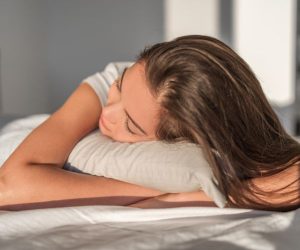HOW TO REMOVE BLOOD STAIN FROM MATTRESS IN 5 STEPS
Blood stains on mattresses are a common problem and you are not alone. From children’s nosebleeds, to women’s period blood leaks and all the little booboos, cuts, mosquito bites, pimples, etc… it can be quite frustrating to deal with.
However, with the right approach, it is possible to remove even stubborn blood stains and restore your mattress to its former glory. In this step-to-step guide, we’ll walk you through the steps you need to take to remove blood stains from your mattress, and give you advice on how to avoid staining your mattress in the future, so you can sleep soundly again.
Table of Contents
How To Remove Blood Stain From Mattress - Step-by-step
Step 1 – Act Fast
The key to successfully removing blood stains from a mattress is to act as fast as possible, on as fresh a blood stain as possible. The longer you wait, the drier the stain, the harder it will be to get the stain out. As soon as you notice a blood stain on your mattress, take action and follow the steps below. What you want to avoid is blood clotting as it dries.
Step 2 – Use Only COLD Water
We could go into the content of blood, made of proteins, which when in contact with hot water causes them to vibrate and clump, but that would be too much detail. So instead, take our word for it, and only ever use cold water when tending to a blood stain on your mattress (or anywhere else).
Step 3 – Blot, Do Not Rub
The number one rule when trying to remove a blood stain from your mattress, is NOT to rub. You should use a clean cloth and cold water to blot the stain from the outside in. If the stain is still fresh, start by blotting without water, using just a dry paper towel, then move into the water treatment.
The cold water will help the salt from blood separate and move into the water, helping you get to the bottom of the stain. You may need to repeat the blotting-with-cold-water step several times until it starts lifting up, especially if the stain is older and the blood is dry.
Step 4 – Take Out The Stain Removers
If the stain is larger and blotting with water is not enough to get rid of it, you will need to use a stain remover. Make sure to apply immediately after blotting with cold water, and continue with blotting (do not rub the stain).
If you would rather avoid the chemicals in a commercial stain remover, we have a few options for your to try:
White Vinegar
White vinegar has many applications and we have successfully used it on blood stains. You can pour it in its pure form, over the stain and let it sit for about 30 minutes, before blotting with cold water. If you are able to sun the mattress while the vinegar is on it, that is optimal and should watch the sun lift the stain right up!
Hydrogen Peroxide
Hydrogen peroxide is a product we use to clean many of the cool sleeping devices on the market. We recommend only using this technique on white mattress covers! You can safely wet your cloth with hydrogen peroxide and blot the stain outside in. Let it sit about 15 minutes before repeating the cold water blotting.
Lemon Juice – Baking Soda Paste
Have you ever tried cleaning your oven door with baking soda? If not, do it now!! Baking soda has so many incredible applications! Make a paste with the juice of several lemons (about 2 lemons for a smaller stain) and add enough baking soda to create a thick paste. Apply the paste to the blood stain and let it sit 10 to 15 minutes. Then vacuum the dried-up paste and blot with cold water once more.
Step 5 – Dry Your Mattress
Once you have removed the blood stain from your mattress, it is important to thoroughly dry your mattress. Adding sheets on top of a wet mattress can lead to mold and mildew growth, which can cause serious health problems. Use a clean, dry towel or paper towels to blot up as much moisture as possible, then allow the mattress to air dry completely. If you are able, let your mattress dry in the sun for best results. Sunning is a beautiful process that uses the power of the sun to lift stains (it works on all cloth and we have removed baby poop stains from hundreds of cloth diapers this way.
Can I Use Bleach To Remove Blood Stains From My Mattress?
While it is not recommended, I think I would be ready to use bleach on my own mattress as a very last resort… so I won’t tell you not to do it, but try everything else before using bleach.
If you are determined to use bleach to remove blood stains from your mattress, be ready for the potential damage to cancel your warranty. But then again, stains often cancel warranties anyways…
Only use bleach on a white mattress cover – do not attempt this on a colored mattress cover, as the bleach will turn it white and leave an irreparable stain. Dilute a little bleach in cold water and use the same blotting technique described above, working your way outside in.
Note that discoloring is very likely to happen – always test a small area before attempting to use bleach on a larger, more obvious, area of your mattress.
How To Prevent Blood Stains On Mattress
The best way to deal with blood stains on mattresses is to not stain it in the first place. That is actually very easily done!
Since you cannot control the blood stains, and since they are naturally bound to happen to all members of the family, you need to protect your mattress. We always recommend protecting your mattress investment with a waterproof mattress protector! Did you know that many mattress warranties are canceled once your mattress is stained?
Don’t take the risk – add a waterproof mattress protector on top of your mattress and never sleep without it! Our favorite one is this bamboo waterproof mattress protector – it is thick and if anything, it adds comfort to your bed (I promise it is not noisy and you won’t feel like you’re sleeping on plastic).
For younger children, we recommend a waterproof mattress so you can just wipe off the blood (or any other bodily liquids).
How To Remove Blood Stain From Mattress
Removing blood stains from a mattress can be a challenging task, but with fast reaction and the right process, it is possible to restore your mattress to its former glory.
By acting fast, blotting the stain, applying cold water, using a stain remover, and drying the mattress thoroughly, you can remove even stubborn blood stains and ensure that your mattress is clean, fresh, and ready for a good night’s sleep. Make sure to add a quality waterproof mattress protector once your mattress is clean, to prevent future stains.
FAQ
Most frequent questions and answers
It is always easiest to treat blood stains on a mattress if the blood is fresh. In that case, first blot the fresh stain with a dry paper towel, then blot it with cold water outside in. If needed, treat with a stain remover, and cold water again, then fully dry your mattress.
If the blood stain in your mattress has dried and harden, you will need to blot it with a cloth and cold water multiple times until the stain starts lifting. Then treat with a stain remover and rinse with cold water again. Finally, let fully dry.
Yes, you can try making a paste of lemon juice and baking soda, blot it with white vinegar, and let it sun.
If you decide to use bleach, use it sparsely and only on white mattress covers, after having tested a small area of your mattress. Start with a diluted solution with cold water. Discoloring is likely to happen.
More Sleep Resources

Is It Ok To Sleep With One Arm Under the Pillow?
IS IT OK TO SLEEP WITH ONE ARM UNDER THE PILLOW What You Should Know When you settle into bed at night, you might instinctively

How Much Melatonin Do I Need? Your Complete Guide
HOW MUCH MELATONIN DO I NEED Your Complete Guide When you’re struggling with sleep, melatonin supplements often seem like a simple solution. But finding the

What Are Flat Sheets For | A Complete Guide to This Classic Bedding Essential
WHAT ARE FLAT SHEETS FOR? A Complete Guide to This Classic Bedding Essential If you’ve ever stood in the bedding aisle wondering, “What are flat

How to Make Your Bedroom Look Like a Hotel | 10 Easy Tips
HOW TO MAKE YOUR BEDROOM LOOK LIKE A HOTEL 10 Easy-to-Follow Tips Want to know how to make your bedroom look like a hotel? You’re
How is sleepwalking diagnosed?
It is generally easy to diagnose sleepwalking if the sleeper lives with family members or roommates who notice the unusual nighttime activity associated with sleepwalking.
Can sleepwalking be treated?
While no drug exists to treat sleepwalking, the condition is usually a symptom of external cause or an underlying condition. Treating the condition first will often result in getting rid of sleepwalking.
Who is at risk for sleepwalking?
Children are most at risk of sleepwalking. Though a genetic factor seems to exist, making children of sleepwalking parents more likely to sleepwalk. Adults can also start sleepwalking and should consult a doctor to understand the underlying cause.
What safety precautions should be taken for someone who sleepwalks?
If the sleepwalker is a child, it is important to set door and window alarms, add stair gates, avoid using bunk beds, or even maybe an indoor movement detector if this is a young child. For adults, the risk is with walking out of the door, cooking, driving. An indoor alarm and door/window alarm can help too.
Share this deal with a friend!

Laura Georgieff
Laura is a mother of three who did not sleep through the night for the first 5.5 years of her kids' lives. She is passionate about sleep quality and loves sharing her experience and knowledge of all thing bedding! It is her mission to help you make the best decisions when it comes to sleep and help you get the best deal on the market!


